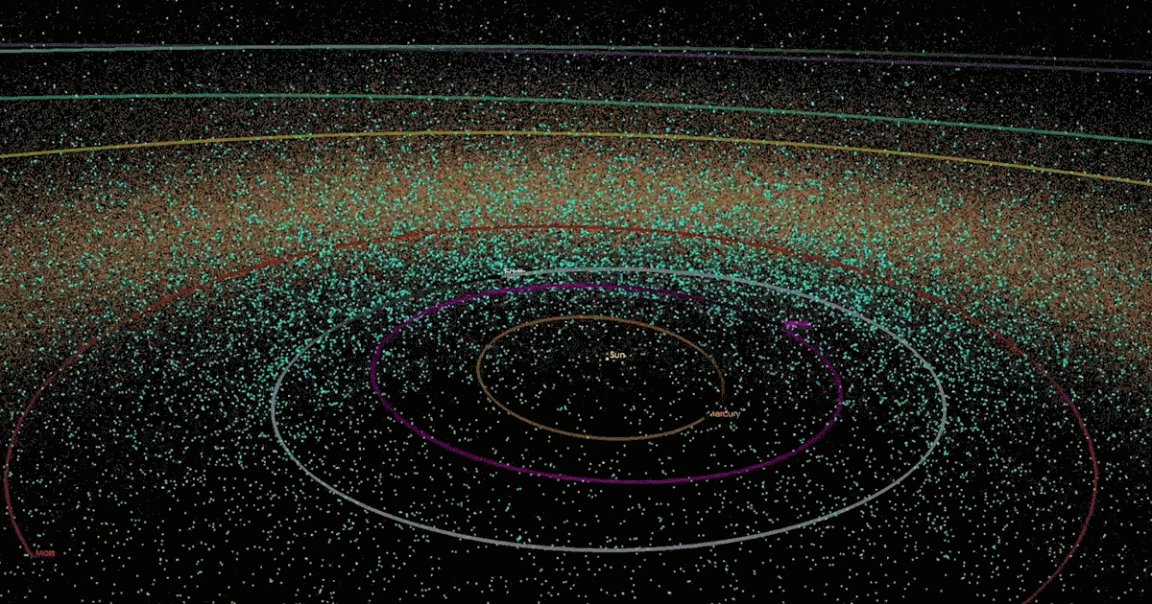
SpaceX’s Starlink satellites could cost us more than a clear view of the stars.
Astronomers have told Axios they fear the mega-constellation of tiny satellites could make it harder to spot asteroids near Earth — and that could mean they might not see one on a collision course with our planet in time to stop it.
Eventually, SpaceX hopes to have thousands of Starlink satellites in Earth’s orbit as part of its plan to provide the world with internet access. So far, though, the constellation consists of just 120 satellites — but even that relatively low number has been enough to impede astronomers’ view of the night sky.
“Wow!! I am in shock!!” astronomer Clarae Martínez-Vázquez tweeted in November. “The huge amount of Starlink satellites crossed our skies tonight at @cerrotololo. Our [Dark Energy Camera] exposure was heavily affected by 19 of them!”
While most asteroids are harmless, even SpaceX’s own CEO Elon Musk has predicted that “a big rock will hit Earth eventually.”
Even a relatively small space rock can cause tremendous damage if it makes impact with the Earth — and spotting them is already difficult. As Starlink grows, the light from the satellites could make detecting asteroids even harder, experts told Axios.
Now that it appears too late to stop SpaceX from moving forward with Starlink, astronomers may be left with no choice but to develop new — and potentially costly — detection methods. Those might include space-based asteroid-detecting telescopes, they told Axios, or software that can account for SpaceX’s satellites in images produced by ground-based telescopes.
“The astronomy community dropped the ball,” astronomer Jonathan McDowell told Axios. “We should have been on this 10 years ago and we didn’t see it coming.”
READ MORE: Thousands of new satellites could make asteroid hunting harder [Axios]
More on Starlink: Scientists: SpaceX Satellites Threaten “Astronomy Itself”